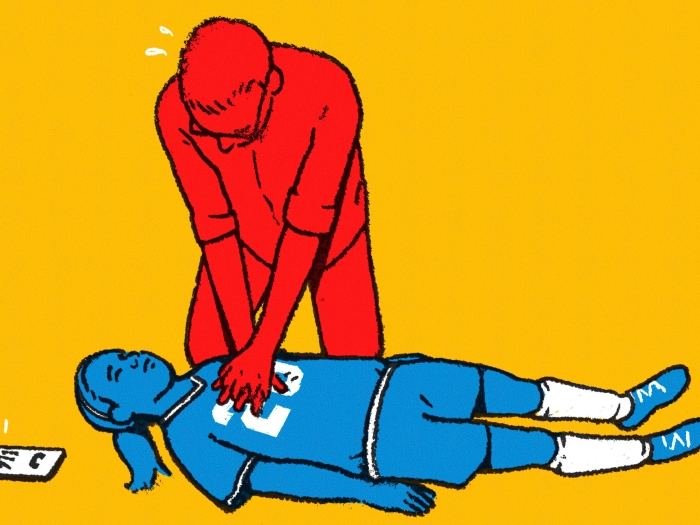Those suffering symptoms of aortic stenosis often write off the warnings as signs of old age. Know how to identify — and address — the real culprit.
7:00 AM
Author |

If you or a loved one begins to experience slowdowns or other noticeable health changes such as fatigue, you might think it's simply a normal part of aging.
But it could be something more severe: aortic stenosis.
MORE FROM MICHIGAN: Sign up for our weekly newsletter
Aortic stenosis is a condition in which the aortic valve fails to open fully because of a thickening of the valve leaflets. A resulting decrease in blood flow from the heart to the body causes the heart to work harder to pump blood.
Still, "an individual may not recognize the signs of severe aortic disease because they come on so slowly," says P. Michael Grossman, M.D., an interventional cardiologist at the University of Michigan Frankel Cardiovascular Center.
Severe aortic stenosis is often unpreventable and is most commonly attributed to aging (often in patients 70 and older).
Other causes, however, also can be linked.
Among them: "a buildup of calcium deposits that cause narrowing of the valve, radiation therapy, infection or a history of rheumatic fever," says Grossman. "A person born with an abnormal valve may also develop aortic stenosis later in life."
That's why thorough evaluation by a primary care provider or a cardiologist is critical.
Signs and symptoms of aortic stenosis
As many as 300,000 people in the United States have severe aortic stenosis, with symptoms that often progress slowly, says Grossman.
Of concern, he says, are the signs of aortic stenosis that mirror other health issues often attributed to old age.
Those ailments include:
-
Increasing fatigue and low energy level
-
Chest discomfort
-
Heart murmur
-
Shortness of breath
-
Lightheadedness or dizziness
-
Fainting or passing out
Reaching a diagnosis, then, might first require some self-reflection.
Grossman often asks his patients to consider what they have trouble doing now compared with their abilities six months or one year ago. Do they experience fatigue or shortness of breath while climbing the stairs, for example, or when mowing the lawn?
"My patients often tell me they just can't do the things they used to do," Grossman says.
Aortic stenosis is typically confirmed via an echocardiogram, a test that helps determine the severity of the condition and the most appropriate treatment.
Treatment for aortic stenosis
According to Grossman, surgical aortic valve replacement (SAVR) is the standard treatment for aortic stenosis. It involves opening a patient's chest to replace his or her aortic valve with a man-made mechanical valve or a tissue valve taken from an animal heart.
However, roughly one-third of patients are not candidates for this type of surgery. Many others may also be at increased risk of SAVR-related complications such as bleeding or infection.
A common alternative approach, Grossman says, is a less-invasive valve replacement option known as transcatheter aortic valve replacement (TAVR). The procedure involves a catheter through which a new valve is inserted via a large artery in the groin or chest.
SEE ALSO: 5 Years Later, 'Life is Good' for One of Michigan's First TAVR Patients
And it's a common solution: Frankel CVC doctors have performed more than 900 TAVR procedures.
That option offers several benefits.
"Because TAVR is less invasive than open-heart surgery, patients experience less downtime and a faster recovery, typically within a matter of days or weeks versus up to three months with an open-heart surgical procedure," Grossman says.

Explore a variety of healthcare news & stories by visiting the Health Lab home page for more articles.

Department of Communication at Michigan Medicine
Want top health & research news weekly? Sign up for Health Lab’s newsletters today!





